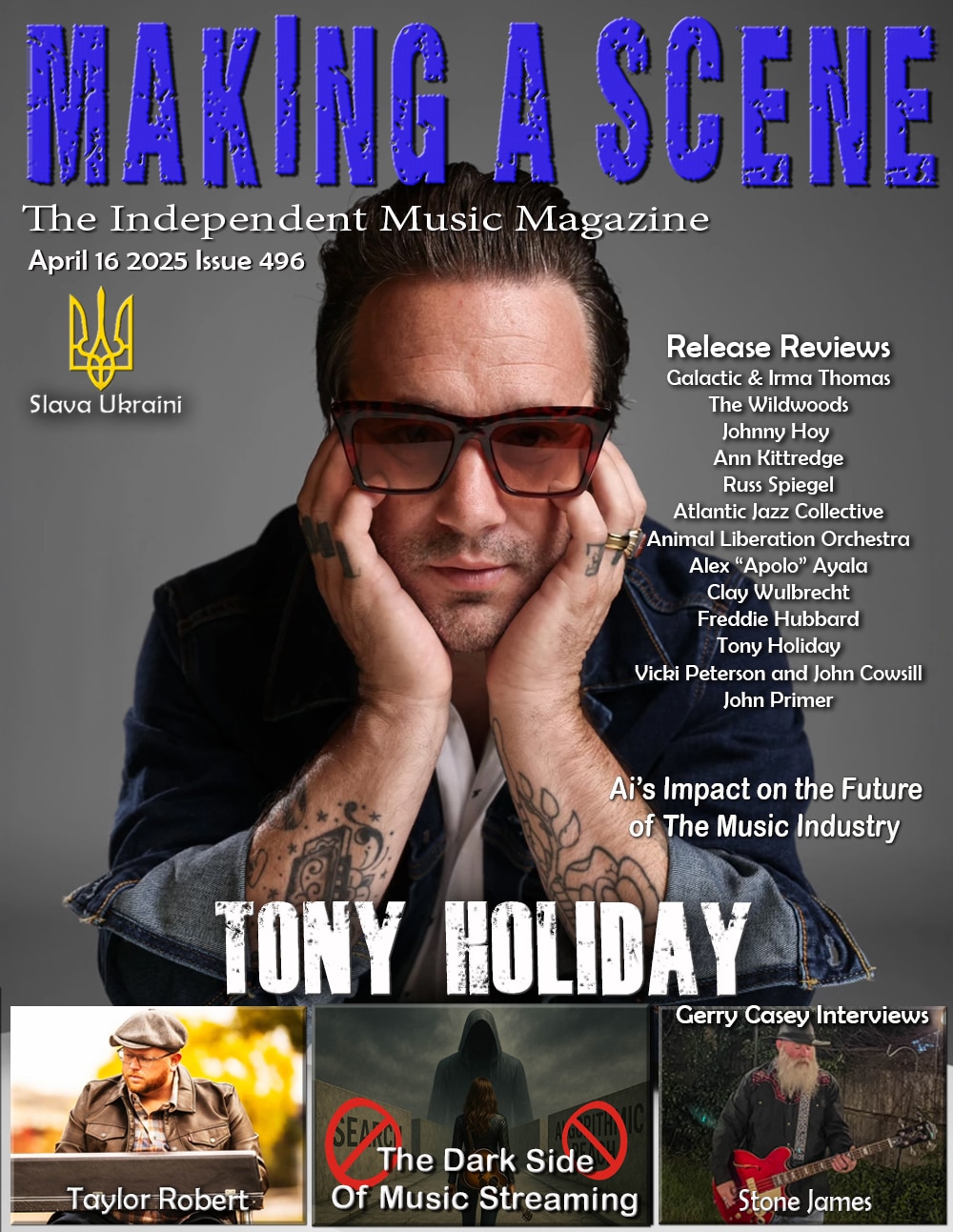Art Hirahara Verdant Valley
 Art Hirahara
Verdant Valley
Posi-Tone
Pianist/composer/ and bandleader Art Hirahara delivers his eighth album as leader on the Posi-tone label, this time with a tight quartet rendering mostly originals with a Wayne Shorter cover and a tune each composed by bandmates, the core Posi-Tone rhythm tandem of bassist Boris Kozlov and in-demand drummer Rudy Royston. Joining this rhythm section is a frequent collaborator of Kozlov’s, acclaimed Donny McCaslin (Maria Schneider Orchestra among others) on tenor sax and alto flute. Hirahara, heard on many Posi-Tone recordings as stated, has performed on five continents and with a virtual who’s who in jazz, mostly as a sideman until evolving to his leadership role. Notably his degree from the Oberlin Conservatory of Music is in Electronic and Computer Music and fittingly he is no slouch on the Fender Rhodes, but this album, like those as leader preceding it, are totally centered on the acoustic piano.
The beauty of Hirahara’s music is his gift for melody and subtlety, although he’s certainly capable of swinging when called for. Some have described has piano technique as midway between Bill Evans and Keith Jarrett which obviously covers a very wide range. He begins with “Zero Hour,” inspired by early months of the pandemic, initially conveying a sense of worry and concern that lightens in tone and gathers strong momentum behind McCaslin’s assertive entrance and ends with a calm as if to suggest we’ve found our landing spot. The title track was originally included on his solo piano EP Ascent released in April of 2022. This version features bassist Kozlov playing the melody arco style while. Hirahara supplies bright chording accented by Royston’s shimmering cymbals. Close your eyes to envision the surrounding greenery to these lush sounds.
“The Shadowist” is inspired by the paintings of Italian Renaissance painter, Caravaggio, who was famous for his use of shafts of light contrasted by pitch black darks. In this vein, Hirahara uses two melodies which stand alone initially before he finds the common harmonies. McCaslin blows a convicted series of choruses and Hirahara dances all over the keys, swinging hard before the group takes the tempo way down reflecting darker tonality. “Truth Called Love” is a revisited solo piano piece that dates to Hirahara’s days in graduate school at CalArts, 25 years ago. In a way, this was a challenge to himself to determine whether his artistic identity had changed in the intervening years, ultimately concluding that it has remained intact.
“Symbiosis” obviously is all about balance, in this case the quartet being beautifully in synch with each other, straddling free expression with restraint, with the former often winning out, especially with McCaslin’s fervent statements. “Sphere of the Muses” takes its inspiration from the mythological nine goddesses who reign over a sphere of artistic influence. Hence, Hirahara uses nine spheres of harmony that alternate between two chords, leaving the melody to be created by the interaction of the musicians as he did on his last album on “Open Sky.” Kozlov’s bowed bass set against Hirahara’s encompassing use of the keys and Royston’s thunderous support gradually lessen as the piece cruises out quietly, setting up the undulating, cascading “Escherian Steps,” inspired by the impossible disorienting geometric images of artist M.C. Escher, captured best by the assured and aggressive McCaslin pushed by the ever-frenetic Royston.
At this point we need a breather which comes with Wayne Shorter’s “Lost” rendered as a gorgeous trio ballad. Kozlov is the composer for “Danza Por Arte” in the style described by Hirahara as “thoughtful, intricate, catchy, and soulful.” As mentioned, McCaslin and Kozlov have a long history together, and the saxophonist deftly navigated the intricacies with his fluid, expressive runs which Hirahara answers with his inspired flight, capped off by a Royston drum solo that sets up an explosive climax. We revert again to the pensive style in the trio rendered “Ships Passing,” about what many of us often ponder – what could have been. The closer is “I Used to Love Her,” penned by Royston as a mid-tempo ballad that features McCaslin on alto flute. The beauty of the piece may surprise some, given that it was written by a drummer but its bright melody caps off this thoroughly enjoyable listen.
These are four exceptional players displaying their virtuosity. On previous recordings we’ve lauded Hirahara’s smooth, light touch and melodic sense but here he couples that with energetic, percussive pieces as well. Perhaps McCaslin, who is generally on fire throughout, was the catalyst for such energy. Yet, the more we listen to the trio of Hirahara, Kozlov, and Royston we marvel at how consistently they excel.
Art Hirahara
Verdant Valley
Posi-Tone
Pianist/composer/ and bandleader Art Hirahara delivers his eighth album as leader on the Posi-tone label, this time with a tight quartet rendering mostly originals with a Wayne Shorter cover and a tune each composed by bandmates, the core Posi-Tone rhythm tandem of bassist Boris Kozlov and in-demand drummer Rudy Royston. Joining this rhythm section is a frequent collaborator of Kozlov’s, acclaimed Donny McCaslin (Maria Schneider Orchestra among others) on tenor sax and alto flute. Hirahara, heard on many Posi-Tone recordings as stated, has performed on five continents and with a virtual who’s who in jazz, mostly as a sideman until evolving to his leadership role. Notably his degree from the Oberlin Conservatory of Music is in Electronic and Computer Music and fittingly he is no slouch on the Fender Rhodes, but this album, like those as leader preceding it, are totally centered on the acoustic piano.
The beauty of Hirahara’s music is his gift for melody and subtlety, although he’s certainly capable of swinging when called for. Some have described has piano technique as midway between Bill Evans and Keith Jarrett which obviously covers a very wide range. He begins with “Zero Hour,” inspired by early months of the pandemic, initially conveying a sense of worry and concern that lightens in tone and gathers strong momentum behind McCaslin’s assertive entrance and ends with a calm as if to suggest we’ve found our landing spot. The title track was originally included on his solo piano EP Ascent released in April of 2022. This version features bassist Kozlov playing the melody arco style while. Hirahara supplies bright chording accented by Royston’s shimmering cymbals. Close your eyes to envision the surrounding greenery to these lush sounds.
“The Shadowist” is inspired by the paintings of Italian Renaissance painter, Caravaggio, who was famous for his use of shafts of light contrasted by pitch black darks. In this vein, Hirahara uses two melodies which stand alone initially before he finds the common harmonies. McCaslin blows a convicted series of choruses and Hirahara dances all over the keys, swinging hard before the group takes the tempo way down reflecting darker tonality. “Truth Called Love” is a revisited solo piano piece that dates to Hirahara’s days in graduate school at CalArts, 25 years ago. In a way, this was a challenge to himself to determine whether his artistic identity had changed in the intervening years, ultimately concluding that it has remained intact.
“Symbiosis” obviously is all about balance, in this case the quartet being beautifully in synch with each other, straddling free expression with restraint, with the former often winning out, especially with McCaslin’s fervent statements. “Sphere of the Muses” takes its inspiration from the mythological nine goddesses who reign over a sphere of artistic influence. Hence, Hirahara uses nine spheres of harmony that alternate between two chords, leaving the melody to be created by the interaction of the musicians as he did on his last album on “Open Sky.” Kozlov’s bowed bass set against Hirahara’s encompassing use of the keys and Royston’s thunderous support gradually lessen as the piece cruises out quietly, setting up the undulating, cascading “Escherian Steps,” inspired by the impossible disorienting geometric images of artist M.C. Escher, captured best by the assured and aggressive McCaslin pushed by the ever-frenetic Royston.
At this point we need a breather which comes with Wayne Shorter’s “Lost” rendered as a gorgeous trio ballad. Kozlov is the composer for “Danza Por Arte” in the style described by Hirahara as “thoughtful, intricate, catchy, and soulful.” As mentioned, McCaslin and Kozlov have a long history together, and the saxophonist deftly navigated the intricacies with his fluid, expressive runs which Hirahara answers with his inspired flight, capped off by a Royston drum solo that sets up an explosive climax. We revert again to the pensive style in the trio rendered “Ships Passing,” about what many of us often ponder – what could have been. The closer is “I Used to Love Her,” penned by Royston as a mid-tempo ballad that features McCaslin on alto flute. The beauty of the piece may surprise some, given that it was written by a drummer but its bright melody caps off this thoroughly enjoyable listen.
These are four exceptional players displaying their virtuosity. On previous recordings we’ve lauded Hirahara’s smooth, light touch and melodic sense but here he couples that with energetic, percussive pieces as well. Perhaps McCaslin, who is generally on fire throughout, was the catalyst for such energy. Yet, the more we listen to the trio of Hirahara, Kozlov, and Royston we marvel at how consistently they excel.
- Jim Hynes
Discover more from Making A Scene!
Subscribe to get the latest posts sent to your email.













































